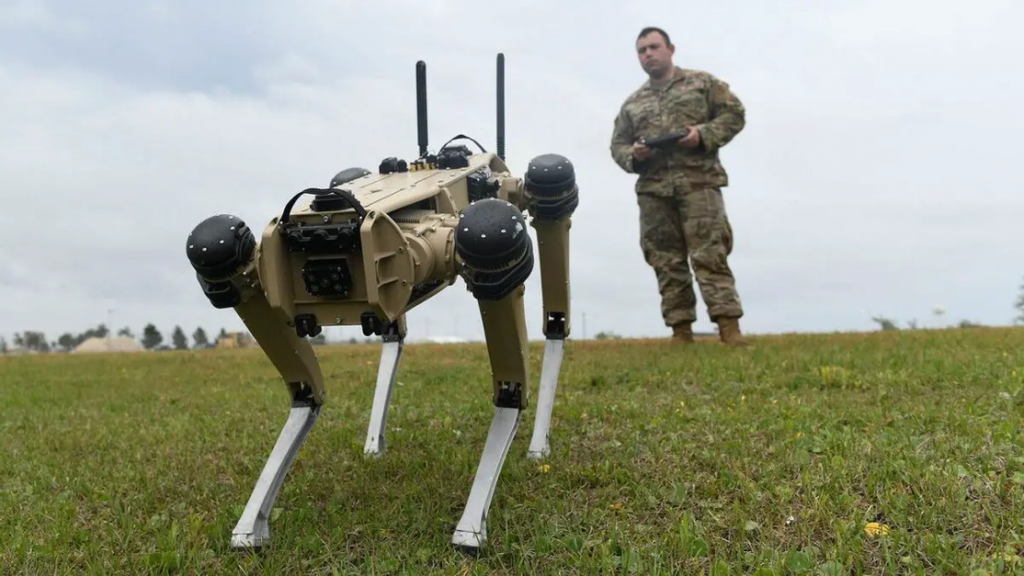The U.S. Army is contemplating the integration of a “robot dog” unmanned robot with its new infantry rifle, aiming to explore future possibilities for close combat scenarios.
This intriguing development was revealed by Bhavanjot Singh, a senior scientific technical manager at the Army’s Combat Capabilities Development Command (DEVCOM), during a recent meeting with lawmakers in Washington, D.C. Singh’s proposal involves arming a Vision 60 Quadruped Unmanned Ground Vehicle (Q-UGV) manufactured by Ghost Robotics with the Army’s Next Generation Squad Weapon rifle.
While previous experiments involved mounting an M4A1 carbine on a Q-UGV, employing the new Sig Sauer XM7 rifle would represent a significant leap in leveraging unmanned robots to augment human capabilities.
The unique advantage of robot dogs lies in their ability to navigate various terrains that may be inaccessible to wheeled vehicles. This feature makes them potentially valuable assets in military operations, particularly in challenging environments.
However, the Army’s Combat Capabilities Development Command spokesman, Tim Ryder, clarified that the exploration of human-machine integration, including this prototype, does not necessarily imply that weaponized robot dogs will be deployed in active combat scenarios. These demonstrations serve as a means to explore transformative capabilities for future combat formations without committing to formal research programs or investments.
The Sig Sauer XM7 rifle, part of the Next Generation Squad Weapon program, was designed to replace the M4 carbine and the M249 Squad Automatic Weapon in the Army’s arsenal. While it has gained favor among U.S. special operations forces, concerns have arisen regarding its size and weight for standard infantry use.
Robot dogs like the Vision 60 Q-UGV have already found roles within the U.S. military, enhancing perimeter security, providing intelligence, surveillance, target acquisition, and reconnaissance (ISTAR) support in remote areas, and assisting in explosive ordnance disposal tasks. However, the notion of arming these robotic companions and deploying them alongside troops has sparked controversy within the robotics industry.
Several robotics companies, including industry leader Boston Dynamics, have urged global militaries to refrain from weaponizing autonomous or remotely operated robots. They argue that weaponizing such robots, which are increasingly accessible to the public and capable of reaching previously inaccessible areas, raises ethical concerns and risks damaging public trust in this technology.
Despite these concerns, defense contractors continue to explore combinations of unmanned ground robots and weapons systems. Various prototypes, including robot dogs armed with rifles, have been unveiled by different companies. However, the Army’s robotics program officials suggest that deploying armed mechanized canines alongside soldiers may still be a decade away due to certain limitations in terms of mobility, endurance, payload capacity, and power.
It’s essential to note that the Defense Department remains committed to the responsible and lawful development and deployment of all weapon systems, including those with autonomous features, as outlined in its guidelines on autonomy in weapons systems.

